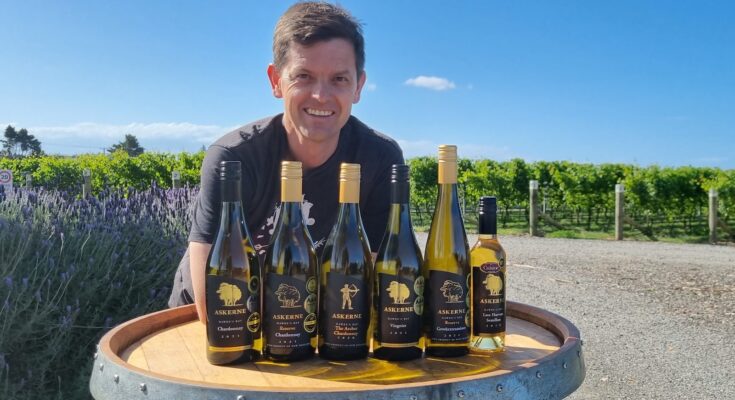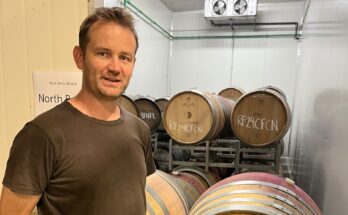I’m in Hawke’s Bay for a flying visit, and drop in to see Cairn at Askerne. I explain to him that it’s obviously not the first time I’ve been to the property. My article about an afternoon in the Cellar Door hosted – by family member Laura – is here > https://winefolio.co.nz/?p=3235. I tell him that “Laura is undoubtedly one of the best, most enthusiastic Cellar Door hosts that I’ve ever come across – you’ve got a lot to live up to!”
Cairn Coghill: It makes a difference that obviously she’s grown up in this world.
Winefolio: But what I’ve seen since are wines that I thought were good – and hilariously priced I must say! – then start to grow in quality, quite noticeably – and recognition.
CC: It’s been a very family-centric business. Laura brings an authenticity to it, as opposed to rattling off a script. From my perspective, I’ve come in and taken some ownership of the winemaking side. Historically there has been use of consultants – that was the previous model. Good consultants, but having that ownership… it’s been exciting for me. It’s a nice mixture of all my worlds that I’ve had in the past. It’s complicated – we’ve got 17 different varieties! And at my last count we’re at 28 different wines. It does broaden your scope though.
WF: Was that part of what attracted you to it?
CC: I’ve always had a wider range anyway. Prior to here I was a winemaker at Sileni for thirteen years. Like most medium to big-sized companies, we were making quite a cross-section of wines. So I had a reasonably broad spread there. Hawke’s Bay has always been a pretty diverse region – going from the coast over to the hills. Coming here I thought i had a pretty good overview, but this is different again.
Askerne is 100% one site. Which is cool in itself – I’ve gone from multiple sites where you can cover risks and target varietals to certain areas, to what is a quite special site. We’re around 20-odd hectares, but the diversity is just massive. Case in point is Chardonnay – picking can be from start to finish, anywhere from two to four weeks. We’ve got 1066, 548, clone 15, 95 and Mendoza – all at different ages! Gewurz is a strong thing here and I’ve had to do a bit of learning on that one. I’d only ever made one Gewurz – and one Viognier – in the past. It took five years to sell it! Whereas here they’ve hung in there, and now found a niche for it.
WF: I love it when you see that – and the recognition comes – not just because it’s a quirky thing that someone loves doing, but because it is actually very good.
CC: Yes, you survive. The reason you keep doing it because it is actually good and right for the site. Viognier is a difficult variety to deal with and you see a lot just getting lost. This is some of the cleanest fruit I’ve ever seen with Viognier. That’s a massive credit to Katherine. She’s very proactive and it certainly shows in the fruit.
WF: I had a really interesting night last night – hosting an evening with Ian and Linda Quinn – at the small restaurant chain I help manage in Auckland. A very different perspective on wine – the talk was very centred on growing grapes, and not the final product.
CC: They’re doing something quite special and exciting. In America, a lot of the high-end wine comes from grower-controlled vineyards. I don’t think growers are talked about enough. A lot are just seen as the commodity stuff. Ian and Linda are specialist growers and are probably in a fairly unique situation where you would struggle to know a vineyard that had that many winemakers pulling from one single vineyard.
WF: They did something that would seem quite natural to them – at their house they invited the winemakers who use fruit for their vineyard, to come and try all the wines together. They said the producers were thrilled “This is brilliant – we never do this!”. The Quinns just assumed that was what happened.
CC: Tasting the three Chenins, side by side, and to see that perspective.
WF: But I love that, as a family-run business that they can do things here, that aren’t mainstream – like a sweet red wine. I was at a recent Awards presentation and Katherine was up on stage about three times!
CC: We’ve got extremes. The big boys who are very retail-centric, where margins are tight and it is all about efficiency. Our model doesn’t work there. This is a high-cost, complex model which is less efficient – but! We are very much a direct sale – selling our story. Costs for everything have gone by 30% but wine prices are reasonably stagnant, so everyone is effectively absorbing those costs. It can be very hard to put your prices up, so it has to be incremental.
WF: I get the Hawke’s Bay Chardonnay Collection box – and you’re in there, so you deserve the accolades, and to be priced accordingly.
CC: I think in last year’s we were the cheapest wine in the line-up. I think there’s a mentality where you see a $30 wine and put in here, but the $80 wine is here (waves his arms higher).
WF: I remember with the first collection… that I asked – is this supposed to be a cross-section? Or has the judge just picked their top 12 favourites? Because I thought what was presented was a cross-section of Hawke’s Bay Chardonnays, from cheaper to expensive, and a range of styles. From Coopers Creek Limeworks at around $20 up to Church Road TOM at $150.
CC: There are definitely wines that are lower priced that deserve to be in that higher bracket. A lot of it is marketing and how confident a winery is to wave the flag and say ‘it’s worth this’.
WF: I do my own benchmark tastings, and people have said to me “why don’t you do a sub-$40 tasting and then a $40+ one separately?”. And my response is that i want a situation where any wine could win. It’s all blind tasting. I don’t want to put wines into a box and say ‘that’s your place’. I don’t care if it’s cheap or expensive as long as it’s good.
CC: If you start to look at New Zealand in a worldwide context, then again we have those same conversations.
WF: The best of NZ is cheap on a worldwide scale. But there’s only a small percentage of New Zealanders who understand that a bottle of NZ wine at $100 could be great value.
CC: If you back to the GFC when things went pear-shaped, one of the mistakes that people made was to drop their prices on the higher-end wines. John and Kathryn want to lead with quality and earn that reputation. It makes it more authentic.
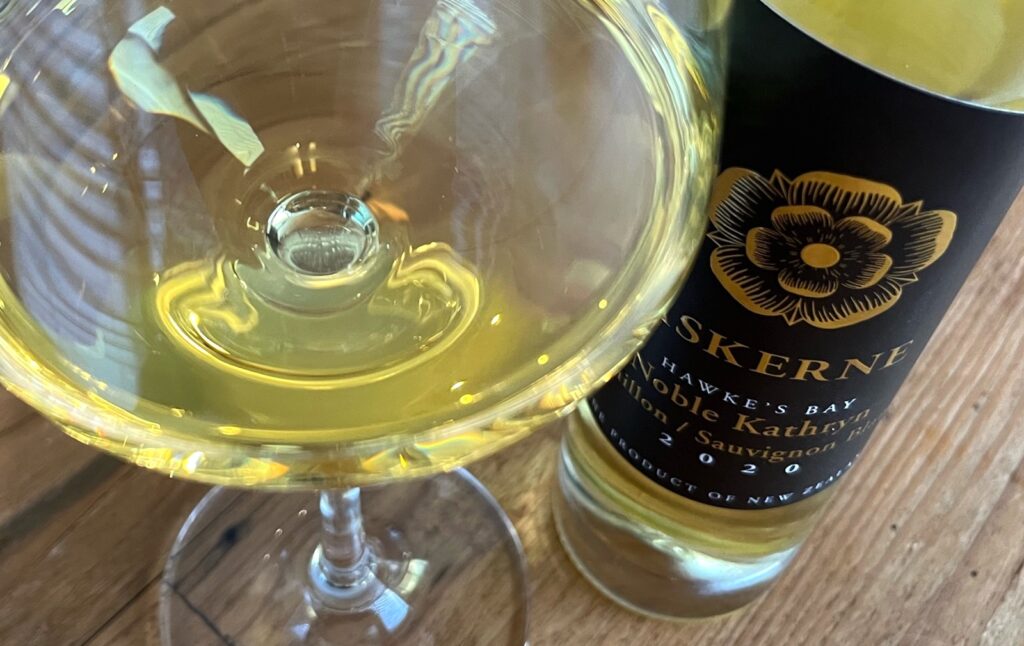
WF: Going back to your route to here – tell me about that?
CC: Prior to Sileni I worked at most Hawke’s Bay wineries at some point. I did the rounds! Cut my teeth at Church Road, Villa and Vidal. Ticked off a few others like Pask, Hatton Estate, Matariki and other places. My wife was the winemaker at Matariki and we’ve still got a chunk in the cellar. I’ve also done stints in the States, in Oregon with Pinot – and France with the Bordeaux varietals as well. My world at Sileni was very dominated by Pinot Noir.
WF: So, did you become a specialist at that?
CC: It was by far the biggest that we did. The Bordeaux were important as well, it being Bridge Pa. It was nice to come here and get stuck into some of the other varietals. Even the sweet wines. The little place I was at was called Chateau de Sailles, in the Sironde, just over the river from Canejac – literally on the tip of Sauternes – so made some beautiful sweet wines there. I do also love the finesse and elegance of Chardonnay and Pinot Noir as well though. It captures it nicely in this little site where I get to cover all those bases.
WF: Where do you stand on whole bunch with Pinot?
CC: I absolutely love it. The commercial stuff in the past would only have tiny amounts, but we had others that were maybe 50 to 80%. I think it works very well in Hawke’s Bay as well. I see the style here as very bright, with sour cherry and lots of spice, and i think that whole bunch gives it a real lift. For decades people have being trying to make Pinot something it’s not. Whole bunch, if used right, adds a nice structure and length to that lighter style as well. I’ve also introduced it into the Syrah here. In Hawke’s Bay, whole bunch can introduce a lighter aspect to the construction of it. The spicy, floral character works well with the fruit here.
WF: I’m often in conversation with people in the industry in Hawke’s Bay, about ‘the future’ and whether that comes down to Chardonnay or Syrah. But I do think that there’s still a future for Cabernets – both Cab Sauvignon and Cab Franc – based on what I’ve tasted over the last few vintages.
CC: I think that with the Cabernet Franc, there’s a feeling that it hasn’t got to where people had thought it would, yet.
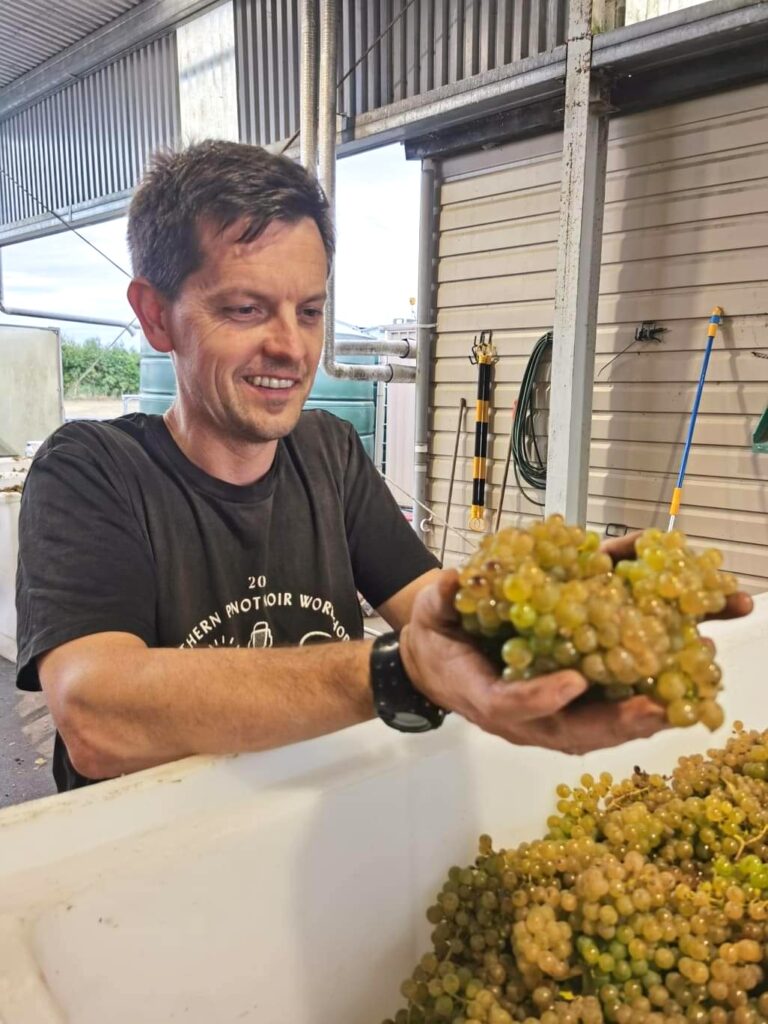
WF: I do think that the Chardonnay from here is very good – high quality, but is it ‘different enough’ to hang your hat on? Lots of places across the world do great Chardonnay. But is it unique enough? I know that in terms of price it’s very good value in global terms. I wonder if Syrah and Pinot have more regional definition – more unique-ness?
CC: I think that’s why Hawke’s Bay was chasing Syrah heavily, because it has a regional fingerprint. With our Bordeaux blends – because they are blends, we’ve been having conversations whether the uniqueness of Hawke’s Bay fruit might shine more if there were more individual varietal reds being made. When you start to blend, you’re still making a good wine, but you lose the chance to highlight those individual characteristics.
WF: Thinking back to the beginning of this century, I used to think that Hawke’s Bay Merlot was amazing, but there haven’t been many – the odd one or two here and there – where I’ve thought that for the last twenty years.
CC: This vintage, as challenging as it was for most, may see some very good Cabernet Sauvignon coming out. It’s about having it in the right places. Which ties back to Pinot Noir as well. I remember you’d go up to Mangatahi and the vineyards there were all planted in Cabernet Sauvignon. Then you’d come down to Twyford on heavy dirt and there’s Pinot Noir! Everything was in the wrong places. At Paritua for example they’ve got quite a few plantings of different clones of Cabernet Sauvignon that ripen way earlier. Something that’s often put onto Merlot is its simplicity. It’s fruit forward, plummy and ‘nice’ but it maybe lacks excitement for people. A bit of green in cabernet sauvignon is seen as unacceptable by most people, but ‘herbaceousness’ in Cabernet Franc is acceptable? It can add a lift and prettiness without it being negative. You do want richness and concentration but also perfume and character.
The nice that has happened in the last five to ten years is seeing a proliferation of smaller producers coming out. I’d be terrified of going out on my own. My wife is a winemaker as well. She’s up at Black Barn. It’s amazing to see the likes of Amy Farnsworth, Jannine, Amy and Olly and all those guys. Some of them are very niche.
WF: It is awesome to see. And it is across the regions, from here to Marlborough and onwards. People taking the chance. Doing wines under flor, in kegs…
CC: It gets everyone thinking and pushing outside your comfort zone. Part of the symposium I’m working on it about that. From very traditional through to other extremes. It would be a pretty boring world if we all made the same thing.
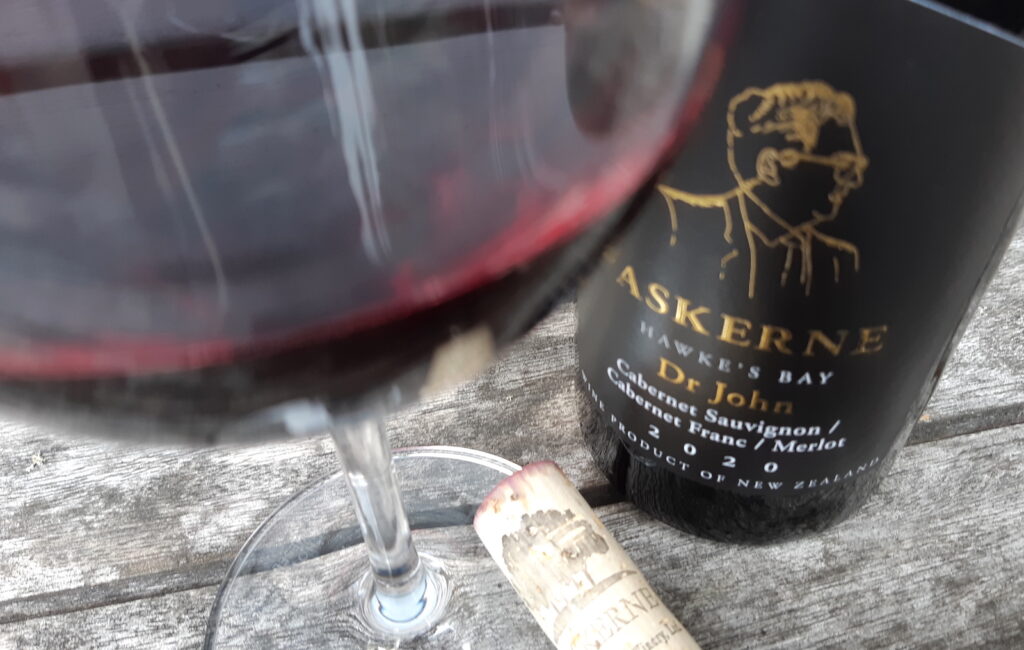
WF: How involved are you out in the vineyard?
CC: Ironically, I probably spend less time in the vineyard here than in my previous role. It’s all just right here. But also, Kathryn does an impeccable job, so there’s no reason to. They have dogs, so they are always doing the rounds through the vines. Her loop goes round the house, round the back here, up there and through the winery. Often they’ll say what they’ve seen. Come harvest I’m out there sampling and checking, but I’m only two and a half years here. They know the vineyard inside out.
WF: Does it take a while to understand a place?
CC: Yeah, I think the biggest thing is understanding the fruit. This vineyard is remarkably different to what I experienced before. Even though we had a massive coverage across blocks in Hawke’s Bay. I’ve had to change the winemaking quite a bit, to suit the fruit. It’s understanding those parcels. I probably create way too much work for myself by trying to keep everything as separate as possible. I’ve got the luxury of being able to do tons of barrels, and see tiny little differences. John and Kathryn have seen it forever, but for me it was a blank canvas when I came in and looked at it without any preconceived ideas.
WF: And the icon wines – was ‘The Archer’ the first one?
CC: Yes, and the ‘Tere’ Syrah, and we’ve done ‘Dr John’ from the 2020s, and another new one – ‘Noble Kathryn’ (shows the bottle). Semillon, Sauvignon Noble as opposed to our straight Noble Semillon. There are some magic parcels of wine here! A lot of them are just absorbed into the Reserve levels, so it is nice to be able to pull them aside and showcase them, and wave the flag a bit.
WF: But at a more everyday level, I really loved that 2021 Pinot Gris from Askerne that won the Trophy at the New Zealand International Wine Show. That was seriously good.
CC: I think that Pinot Gris has been a little bit like Rosé, where it is all chucked in one tank, and all the emphasis goes on other varieties, and not enough on Pinot Gris to really push it. Here we’ve got three clones on the top block and another two clones down the bottom. I think historically they’ve been in the tank together. For ’21 I kept all the clones separate because I’ve never dealt with them before. There was about 20% barrel component in that ’21, and it had a lovely concentration but freshness at the same time. keeping things separate I was able to make it a bit more elegant – and interesting as well.
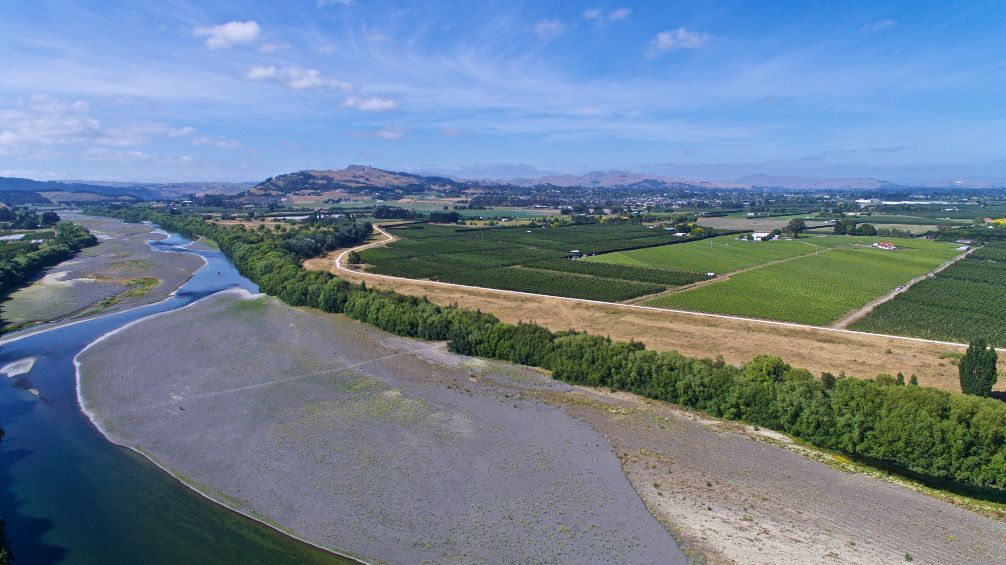
A lot of Pinot Gris is probably at a lower brix in the grand scheme of things. John and Kathryn do push ripeness. A lot of wineries will avoid risk when they can. For us, the ’23 was a massive leap of faith to hold out, that we just had to back ourselves on. The reward was worth it. I’d love to play around a bit more with Viognier as well. Looking to what we can do going forward with that.
Let’s taste that ’23 Pinot Gris. In many respects it was a challenging harvest for Hawke’s Bay. it was wet before the cyclone, and wet after. we were very very fortunate here. We probably got more rain and surface flooding prior to the cyclone. We had to brave and chase good fruit. It is an earlier release than normal, because we ran out of ’22. We also wanted to lead with this one to show that Hawke’s Bay has made some good wines, despite the challenges. This is about 30% barrel fermented.
WF: I could see where you’d go with this – to head drier in style. But I suppose if it is popular, then maybe you make another version – a reserve style? I think it has great typicity. I like Pinot Gris to have that, and not just be a ‘nice white wine’ that could be anything.
CC: There’s two very different picking windows for Pinot Gris. There’s either early where you’re driving a more Braeburn Apple kind of character. And there’s a middle ground where it tastes like absolutely nothing, hahaha. Or you’ve gotta push it. Generally, stylistically, we push it. But then you’ve to got to have done the vineyard work, as it won’t make it to 24 brix.
2022 wasn’t easy either. But for those who put the work in, these are the vintages where the better vineyard managers and winemakers earn their keep. This ’22 Viognier is my first experience with using new wood in one. Viognier is a harder one because it’s very much a hand sell – which works for us. So I think people don’t want to spend the money on oak for Viognier. Oak handling has to be very careful. You want it to be Viognier, and not Chardonnay! I do want to highlight the floral and spice and I don’t want oak to be a signature aromatically. Palate-wise the oak can help add some structure to that slipperiness you get with Viognier.
WF: What are you looking for in a Viognier, personally?
CC: If you compare it to Chardonnay. There’s a dryness, concentration and texture. Whereas with Viognier I’m always going to want some of that glycerol note that defines it.
WF: With that Pinot Gris of yours that won the Trophy at NZIWS – the ’21 wasn’t it? A whole crowd of us would turn up at various events with it – we really liked that wine a LOT. I put a couple of bottles of that away. I think everyone else drank theirs!
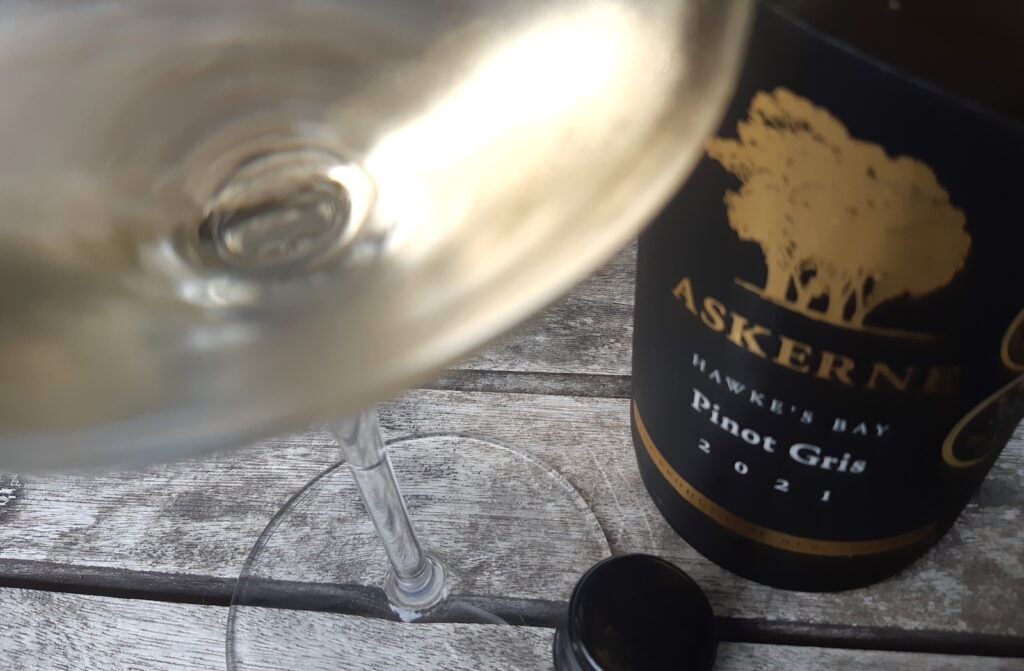
CC: Obviously these guys have Library stock, but I always make a point of putting away four bottles of each wine I’ve made over the years. Covid lockdown was a fair time to start ripping into some of the old stuff. Tucked into a lot of ‘08s and ‘09s.
WF: Yes, I put a dent in my cellar at that point too. I don’t drink that much, and with getting sent a lot of wines to review, I’m probably only opening a bottle that I’d choose to drink once a fortnight?
CC: How do you choose what to put away, or to open for yourself?
WF: Purely on taste. If I really like a wine that I’m looking at, I will make a point of buying a couple of bottles of that. Just – is it delicious, and will it cellar well? I am known as someone with lots of ‘old wine’ as well, hahaha. I’m not afraid to cellar something way longer than most people. Random stuff like Aussie wines from thirty years ago – but good producers like Balgownie, or Coldstream Hills. I do like Geoff Kelly’s site though – he’s very eloquent and knowledgable on older wines.
CC: Generally a lot of people have not experienced old wine. I do wish I lived closer to Wellington as I’d be super interested in the Tastings that Geoff Kelly puts on. I do like it when a restaurant has a few older bottles on the list.
WF: Yes! That does tend to be the ones where the list is fifty-odd pages though! I was at Elephant Hill recently and Simon was telling me that Soul Bar had taken a whole lot of older bottles for their wine list. It is hard for someone like me who has a quite a few decent wines in the cellar, to go out for dinner and see the inflated prices on the menu of what are often fairly average wines. I can look at a short list in a small restaurant and not want any of them!
CC: We’ll try the 2022 Chardonnay. People were worried about the ’22 harvest and how that was playing out. But I think there are quite a few wineries that did a really good job with what they brought in. We confidently made a Reserve. We had worried that we wouldn’t hit the mark. Same with ’23 – there will definitely be a Reserve. It’s quite hard to go after the ’21 that picked up a lot of bling, so we need to make sure we’re still hitting the mark.
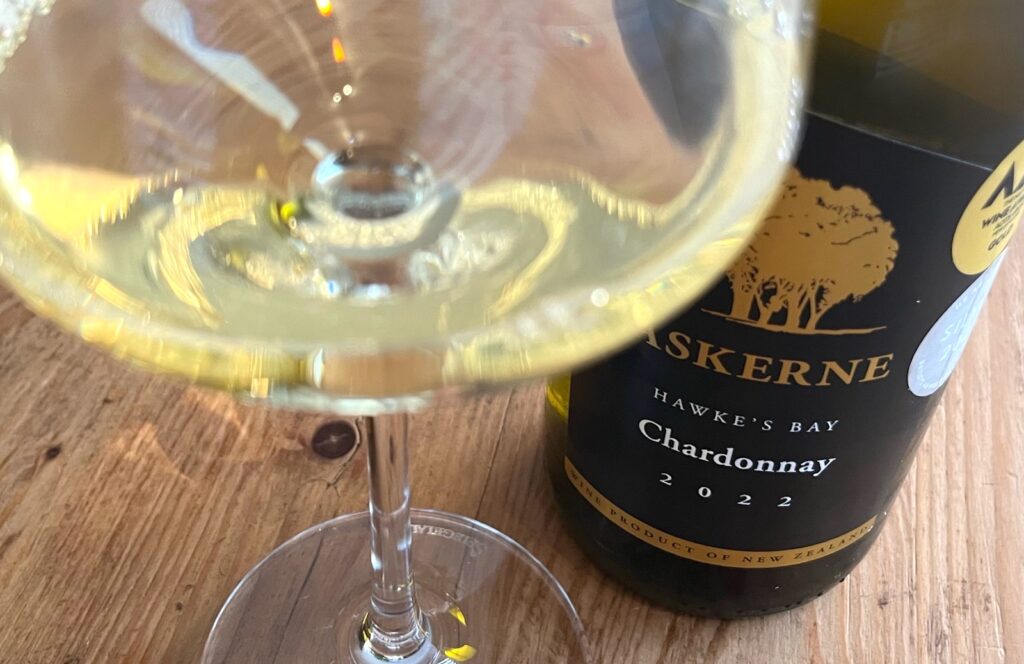
WF: One of those stickers wasn’t me, but the other two were! I got to keep my notes from that year’s shows and I went through and cross-checked what I’d liked against what won what. And, again, went round and bought a couple of things that I’d really liked – where I’d gone Gold on them…even if it ended up getting a Silver. Because you can’t taste everything, so when you do get the chance, it is good to know how your thoughts stack up against the results. That 2022 is terrific, I think you’ve done a great job there.
CC: On top of what Kathryn does to get the fruit to an awesome state, there’s just the balance of the site is wicked. We seem to get a much lower pH, high acid and higher brix here. It’s that combination of it being cool, but also having a bit of humidity – so it is quite a long season for us. the biggest contrast is with my wife up at Black Barn which is probably the hottest part of Hawke’s Bay. We’re weeks behind them.
WF: The last time I came down I took a detour I don’t normally go, and went down past that little coffee place and back along the Tuki Tuki, looking at the vineyards, trying to work out which was which.
CC: Some of Church Road’s best Chardonnay is there. Something about the longer season and later ripening here just seems to give a better balance.
WF: The savoury layer that’s in this Chardonnay is really intriguing. Not just sweet lemon, but that preserved lemon flavour, and some green olive tartness to go with it. It is really juicy, but just in a sweet way.
CC: We’ll quickly look at something red. I’m pleased that there is some Pinot Noir here, as that was most of my world. Cabernet Franc was massive for me as well. At the peak of my Pinot days I would do over 600 tonne of Pinot! Sometimes making more than all of North Canterbury! Now I make about two tonne, which is at the other end of the spectrum. But within those two tonnes we still have five clones. We’ve got some 10/5 – slightly heavier-cropping – which goes to Rosé, but the others – 667, 777, Abel and clone 5 – all bring different components to the blend.
This 2021 was my first harvest, so for this one I kept them all separately and each component had 10% whole bunch. I wanted to see what performed well here. For example, for the ‘22 I had the Abel as a 100% whole bunch component, but fully-destemmed 667 and 777. Trying to play to their strengths.
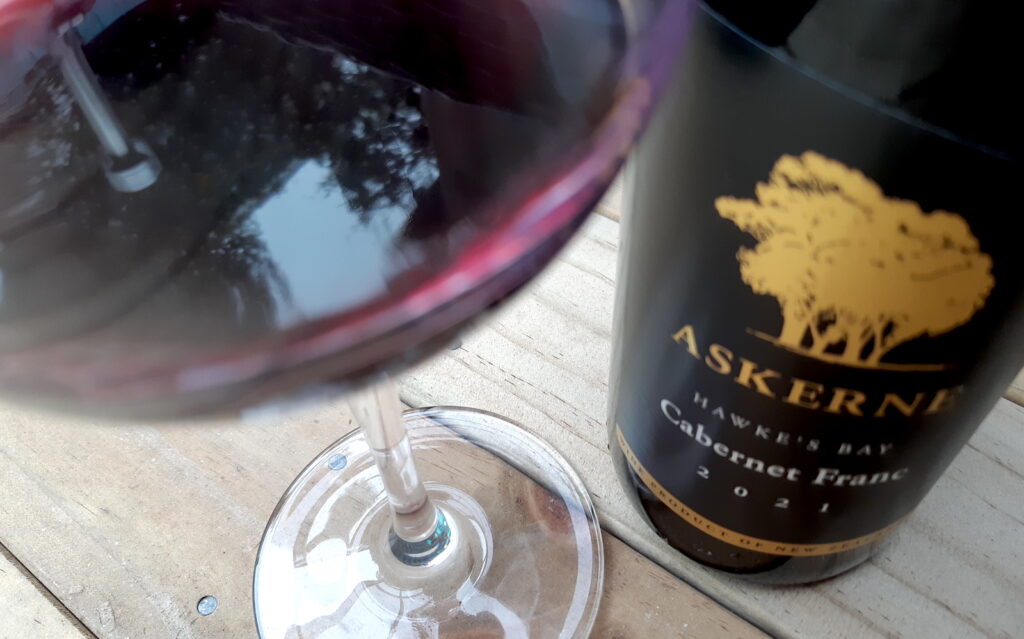
WF: It’s a delicious red wine, but without being overtly Pinot Noir in its typicity. Maybe the oak in this one is masking the varietal signature? Did you say you’re pulling that back for the ’22. Nice fruit – cranberry, sour cherry, and quite an umami note on the finish.
CC: Yes, the oak was already ordered when i got here, so that was the 2021. For the ’22, rein back the oak. Hawke’s Bay doesn’t need much oak – it distracts it way too much. often the issues are people trying to make it what it’s not. You can’t make a Central Pinot here. our benchmark was always Ata Rangi, but specifically the Crimson – for the price point. If we are matching crimson and we’re often ten dollars cheaper, then we’re OK. The blend is made to be better than the individual clones. It feels like a wine that has to be constructed, to make it whole.
And now – Dr. John. This is the 2021. The first one was the 2020, which we mad a small volume of. The emphasis is on it being Cabernet dominant. When John’s Dad – ‘Dr. John’ set up Waimarama Estate it was his thing. There is also a reasonable component of Malbec in this. The Malbec was absolutely stunning in ’21. We kept some for the Wine Auction. Historically it has been a struggle to get Malbec ripe, but with the combination of clonal material and site – it works here.
WF: I like that it is quite robust. Tight and structured, with a line of acidity. The Malbec is quite upfront there – it sets the tone nicely, with the Cabernet flooding around the palate.
CC: We are thinking of doing a straight Merlot and a straight Cabernet Sauvignon in the Estate range for 2022. The blends are beautiful, and I do love them, but I think there’s space for single varietals. We’ll test the waters.
One of the reasons for this next wine, is that it was Kathryn’s passion for sweet wines. I think they’ve made a sweet wine every single year. The Gewurz is Late Harvest, but the Semillon has jumped between Late Harvest and Noble depending on the year. They’re targeting one block and looking for that slightly more nuttiness that you get from the Sauvignon, and is quite different from the straight Semillon. The 2020 turned out wonderfully well, so it was decided that was the opportunity to go for it as a different wine as Icon status.
WF: I guess the Sauvignon brings more acid. There’s a freshness and brightness to this version I’ve not quite seen in the Noble Semillons. This would be around the 120s for residual I’m guessing? That is well-balanced and, as you say, it has that slight roast nut character there too. My overall impression of this is of lightness – I don’t find it cloying or overly sweet.
CC: From a winemaking perspective, it’s really cool to be able to play with such a spectrum of wines here. For the sweet wines, it’s getting to that perfect balance where you still want people to be able to have a glass. Yquem is usually around 125, and a Late Harvest is 90 to 100. There’s some funny things that go on with the sugar and acid balance.
Last glass now – this is from our Solera…it’s based on the De Bortoli Black Noble wine that they saw over in Australia and they’ve been making it since 2004, from Semillon. It has morphed a little bit with a little bit of Viognier and Chardonnay. I’ve also got one barrel from this year that’s going into it.
WF: This is terrific. I’m getting a savoury chicken stock note in here somewhere. It’s very complex. It reminds me of the last time I had a great food match with a sweet wine – the chef had made a beef marrow ice cream!
CC: So I really do get to do it all here. It makes it exciting. I do tend to pull what I learn from what I do with one varietal into another and vice versa – whether that is Pinot Noir or Cabernet Franc.

